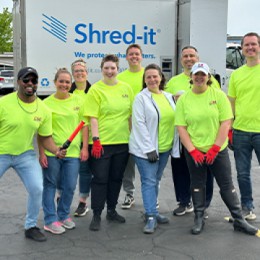
As Stark County’s #1 Local Auto Lender, we finance over 3,000 vehicles of all shapes, sizes, makes, models and prices every year. Auto Lending has become a significant part of our credit union’s ability to serve our community, and we’ve become quite good at making loans to fit our members’ lifestyles and needs.
When you’re ready to purchase a vehicle, you should consider that you’re making an investment. It’s important to know about the auto buying process, while ensuring you’re making a smart and sound investment too. It’s important to us, as your financial partner, to educate members on the car buying process, which we like to break down into three phases.
(Check out our couch video chat series on this topic, and continue reading below!)
Part I: The Basics
Before we get into the nuts and bolts of the car buying process, you’ll want to be familiar with the terminology you might hear as part of the process. Some verbiage may come from the dealer’s side of the transaction, while other terms may come from the loan side of the deal. Regardless, awareness of these words and phrases can make the process easier for you and help you to ensure that you’re getting into a good deal for you.
Here are definitions of some of the most common terms that you may hear during the car buying process:
- Buyer’s Order/Purchase Order - A purchase order (or buyer’s order) is an official document that a dealer sends to a lender. The Buyer’s/Purchase order includes information such as VIN, current mileage, sticker price, taxes, fees, bottom line pricing etc. The purchase order explains exactly how much a consumer is paying for their vehicle and outlines, in an official way, what the financing of the loan could/should be.
- Bottom Line – The bottom line is the amount you will write a check for, in order to purchase the vehicle. The bottom line will take into consideration; the sticker price, taxes, fees, etc. It’s essentially the agreed-upon price that a dealer is selling the vehicle for.
- Negative Equity - If you owe more on your current auto loan than what the vehicle is worth—then you have negative equity. So, if you tried to sell or trade your vehicle, you wouldn't be able to get the value of what is still owed on it.
- Clean Retail Value - Clean Retail values reflect a vehicle in clean condition. This means a vehicle with no mechanical defects and passes all necessary inspections with ease.
- Trade-In Values - Trade-in value is essentially a valuation of your car when you opt for a trade-in, or how much a dealership assesses your vehicle is worth for a trade-in. The amount is shown on the purchase contract and is deducted from the amount you’ll pay for a new vehicle.
- GAP (Guaranteed Asset Protection insurance) - It is an optional, add-on coverage that can help certain drivers cover the “gap” between the financed amount owed on their car and their car's actual cash value, in the event of an incident where the car is declared a total loss. So, if you total a vehicle and insurance does not cover all of the money you still owe on a loan, GAP will cover the rest.
- Warranty - A car warranty is a vehicle service contract where the provider agrees to fix parts broken due to defects in the manufacturer's design or installation. Warranties do not cover everything. For instance, most warranties will not cover accidents or normal wear and tear.
Part II: Benefits of a Pre-Approval and Research
Getting pre-approved before car shopping is a great idea for any buyer. If you want to go into purchasing a vehicle with some buying power and understand your financial picture, you’ll be prepared as a serious buyer. It also helps you to stay within budget. Here are some of the benefits:
- When getting pre-approved with a lender such as CSE, (or any financial institution), you’re having your credit score pulled only once. While, if you’re at the dealership purchasing a vehicle on the spot without getting pre-approved, it’s likely your credit will be pulled multiple times while they’re trying to find a lender for the deal. This can impact your score greatly.
- When getting preapproved, you’ll already know the max loan amount and monthly payment, along with any requirements/limitations ahead of shopping.
- The process to close on your loan can be a quick one once you find the vehicle you want since all of the loan information is ready to go, other than the vehicle details.
Researching both your current vehicle (if you have a trade) and the vehicle(s) you’re interested in looking at before going out shopping, will help streamline the process while you’re out. First, you’ll want to know the value of your own vehicle if you plan on trading it in; running a report on NADA can be a great place to start. If you are looking at a used vehicle and have one in mind, running a Carfax report can give you an insight into it’s history such as previous accidents, mileage discrepancies, how many owners it’s had, etc.
Part III: Closing the Deal
When you’re finally at the point where you’ve selected the vehicle and are ready to sign, it’s important to double-check everything before signing on the dotted line (or your screen, if you’re signing online).
Thoroughly go over the paperwork and cross your T’s and dot your I’s. Look over the buyer’s order for any hidden fees, add-on products available or that may have been added on without you realizing and the costs associated are correct. Double-check your trade-in value and payoff, and the original price of the vehicle to make sure it all adds up. Also, look over the final financing documents to make sure the promised interest rate, loan term, and other agreements are correct, along with being aware of any early payoff fees.
Finally, consider some best practices:
- Have you test drove the vehicle before deciding and financing?
- Have you found the best deal for your trade-in – who will give you the most money and value?
- Beware of the ‘up-sale’ when searching at a dealership.
- Know your budget and stick to it, don’t go outside of your comfort zone.
- Consider having someone you know who knows about cars check out the vehicle, or a trusted mechanic.
We hope that our car-buying breakdown has helped educate you on the basics, terminology, best practices, and process that goes into financing a vehicle. We’re always here to help get you in a vehicle that fits your budget when you need it. Now, go get that dream car of yours, and good luck!
For additional information check out our videos on this topic, we've made it convenient and broken them down into phases.
CSE Couch Chat Video - Car Buying with April | Phase 1 - The Basics
CSE Couch Chat Video - Car Buying with April | Phase 2 - Kicking the Tires
CSE Couch Chat Video - Car Buying with April | Phase 3 - Buckling Up











Eli Richardson | Oct 6th 2023 @ 2:00 PM
The other day, my sister's boyfriend mentioned he's interested in buying a car before the year ends. He believes that he'd find a good deal, so I'll suggest he checks your tips out now. Thanks for explaining that we'd get pre-approved before comparing cars to make the process easier.